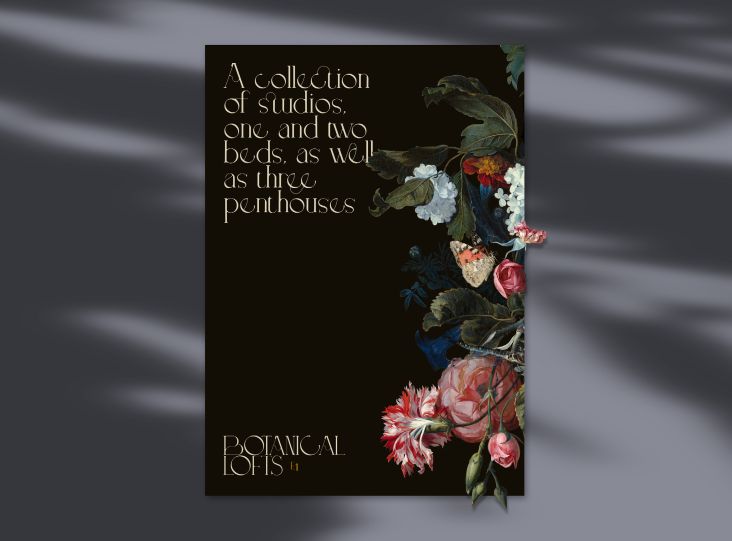Five must-try tips for slaying your creative demons
Generating great ideas is central to working in a creative profession, and Richard Holman knows all about that. He spent the first two decades of 20 years of his career creating advertising and design for TV channels and now devotes his time to helping others have better ideas themselves.

Image licensed via Adobe Stock
That involves running workshops, speaking at events, writing, coaching and hosting the Wind Thieved Hat podcast. Now his first book is available for pre-order, and it tackles a subject that's close to every creative's heart.
Creative Demons & How to Slay Them addresses ten demons that creative people commonly suffer. These are the Demons of Procrastination, the Blank Page, Doubt, Convention, Constraints, Criticism, Theft, Accidents, Failure and Disappointment.
To give a taster of what the book has to offer, we spoke to Richard and got him to share some tips on overcoming our creative demons.
1. Know that you're not alone
Richard believes that the starting point for overcoming your creative demons is to recognise that you're not alone. While other creatives may portray their lives and careers as perfect on social media, in reality, things are quite different. "No creative person, no matter how successful they have become, is without their own demons," he stresses. "Every great artwork is a destination on a long and winding road of heartbreak and self-doubt."
For example, one of the most revered artists in the whole of history is Michelangelo, the Italian sculptor, painter, architect and poet of the High Renaissance. Yet Richard points out that "when Michelangelo was in the middle of painting the ceiling of the Sistine Chapel, one of the greatest artworks of all time, he wrote to a friend, 'My painting is dead. I am not in the right place. I am not a painter.'"
2. Don't get trapped by denial
Although we all suffer from creative demons, most of the time, we just brush them under the carpet. That attitude, though, is holding us back. "I think creativity is one of the greatest attributes we human beings possess," says Richard. "Yet I know from the work I do as a coach and mentor that too often people's creative impulses are smothered by fear, doubt, procrastination and the rest."
When problems seem too big to deal with, it's natural for us as humans to simply push them to the back of our minds and ignore them. But that way lies madness, believes Richard. "I think if you deny your demons or try and battle on regardless of them, you're doomed to failure," he says. "The first step in overcoming them is accepting them, knowing they're always going to be lurking around, and working out a way of working with them. Which of course I explore in the book."
He adds: "Perhaps one of the most surprising conclusions of the book – at least it was to me, anyway – is that sometimes if you respond in the right way, your demons can carry you to a way more interesting place than you might have got to without them."
The longer you leave your creative demons unchecked, the bigger they grow. But no matter how grotesque and hairy your demons might seem, they can be overcome.
3. We're not born with demons: they're learned
Although we all suffer from creative demons, Richard notes that we're not born with them. "Kids, especially pre-school kids, are usually unafflicted and able to be endlessly creative," he notes. "Yet as we grow older, we accrue our own mischievous band of mind-forged monsters who seek to derail our creative endeavours at every opportunity."
This pattern can be reversed, though, says Richard, and the sooner you do so, the better. "The longer you leave your creative demons unchecked, the bigger they grow," he says. "God only knows how many brilliant novels, poems, and movies, even artistic careers, have been lost to the Demon of Procrastination alone. But no matter how grotesque and hairy your demons might seem, they can be overcome."
4. You can do deals with demons
The language of 'slaying demons' implies a binary battle between good and evil. But Richard also explores the possibility of doing deals with demons and illustrates this via the Demon of Doubt.
"This is the Demon who lurks in the wings, watching you closely, waiting for you to get started," he explains. Then, once you're underway, it leaps onto your shoulder and barracks you with questions about whether your work is any good. Or, worse still, whether you are any good."
But we shouldn't just dismiss doubt, Richard adds. "The important thing to recognise about this demon is though it doesn't seem like it at the time, his presence is a really good sign. If you can see the flaws in your work, then it means you have the critical judgement you'll need to make something great. As the writer, Anne Enright, said, 'Only bad writers think their writing is any good'."
Of course, it's easy to take this attitude too far. "The danger is that the Demon of Doubt becomes so strident that he stops you from completing a project," says Richard. "So I encourage readers to do a deal with this demon: to banish him from the studio or writing room until the first draft of the work is made, and then let him back in to challenge the decisions you've taken, but only under strict conditions."
5. How to slay the Demon of Convention
Richard gives one more example of how to tackle your creative demons intelligently. "The Demon of Convention would always rather you walked the road more travelled, limiting your creativity and forcing you to repeat yourself," he explains. To beat this demon, Richard suggests you ask yourself a question that the artist Peter Schmidt posed to his friend Brian Eno, "What if you don't do the things that nobody had never thought of not doing?"
A couple of examples illustrate the point. "Before Marcel Duchamp installed a urinal in a gallery and rang the starting bell for the era of modern art, it was thought that all artworks had to be created by the hand of the artist," notes Richard. "Similarly, before James Joyce wrote Ulysses, it was accepted that novels should abide by the rules of grammar and syntax."
Published by Thames & Hudson, Creative Demons & How to Slay Them features illustrations by Al Murphy and is out in the UK on 24 February. Pre-order your copy here.


























